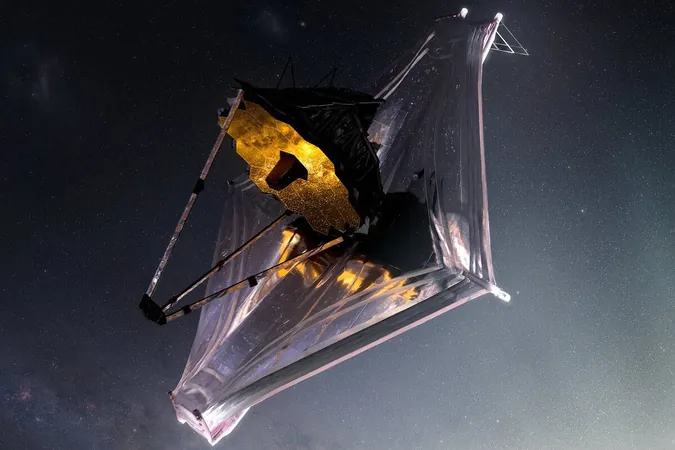
Unveiling the Secrets: Why the James Webb Space Telescope Can't Spy on Earth, Venus, or Mercury
2025-06-29
Author: Wei
The James Webb Space Telescope (JWST) is transforming our understanding of the Universe, delivering stunning images of star-forming nebulae, spiraling galaxies, and distant exoplanets.
Peering into the cosmos as far back as shortly after the Big Bang, Webb reveals galaxies that appear far too developed for their early existence in cosmic history.
Yet, astonishingly, this remarkable telescope cannot observe three of the inner planets in our Solar System: Mercury, Venus, and Earth. This limitation may seem baffling—isn’t a telescope capable of capturing images billions of light-years away also equipped to observe nearby bodies?
The Cosmic Dance: Webb's Unique Orbit
The answer resides in Webb's location, operational methods, and the sensitive nature of its instruments. Unlike the Hubble Space Telescope, which circles Earth, Webb orbits the Sun—specifically, it occupies a spot known as the second Lagrange point, or L2, positioned about 1.5 million kilometers (almost one million miles) from our planet.
This strategic location allows Webb to maintain a stable orbit, balancing gravitational forces from both the Earth and Sun, and conserving fuel. At L2, Webb keeps its gaze directed toward the vastness of space while shielding itself from both the Earth and the Sun.
The Mission Behind L2: Revealing the Infrared Universe
Webb's orbit at L2 is crucial for its main mission: observing faint infrared light from ancient cosmic phenomena and distant objects. Since infrared light is essentially heat, Webb must be insulated from bright sources of heat. With its tennis court-sized sunshield, the telescope effectively blocks heat from the Sun, Earth, Moon, and even the spacecraft itself.
To keep its instruments operating at a frigid temperature of around -225°C (-370°F), cooling is paramount.
Why Can't Webb Turn Its Eyes to Earth, Venus, and Mercury?
Considering this, it becomes evident why Webb cannot observe Earth, Venus, or Mercury. Being positioned beyond Earth's orbit means that to look at these planets, it would have to turn toward the Sun, compromising its delicate cooling system.
This exposure to intense heat would jeopardize Webb’s sensitive instruments, potentially rendering them blind and causing catastrophic damage.
The Risks of Solar Observations
If Webb were to redirect its gaze toward the Sun, its sunshield would fail to protect it. The infrared technology, designed to remain cool, would overheat, risking the mission’s very existence.
Unlike Hubble, which could be serviced by astronauts, Webb is too far away for maintenance, rendering it vulnerable to any damage that could end its mission.
What Webb Can Actually Observe in Our Solar System
However, all is not lost! The James Webb Space Telescope can still observe various fascinating objects in the Solar System that lie beyond Earth's orbit.
It has successfully studied Mars, Jupiter, Saturn, Uranus, Neptune, and several of their moons, as well as asteroids and Kuiper Belt objects like Pluto. These celestial bodies are far enough from the Sun’s glare, allowing JWST to probe deeper into their mysteries.
So, while Webb will not provide a fresh perspective on Mercury’s craters or a distant glimpse of Earth, its innovative design and strategic positioning at L2 are essential for unraveling the profound secrets of the Universe.




 Brasil (PT)
Brasil (PT)
 Canada (EN)
Canada (EN)
 Chile (ES)
Chile (ES)
 Česko (CS)
Česko (CS)
 대한민국 (KO)
대한민국 (KO)
 España (ES)
España (ES)
 France (FR)
France (FR)
 Hong Kong (EN)
Hong Kong (EN)
 Italia (IT)
Italia (IT)
 日本 (JA)
日本 (JA)
 Magyarország (HU)
Magyarország (HU)
 Norge (NO)
Norge (NO)
 Polska (PL)
Polska (PL)
 Schweiz (DE)
Schweiz (DE)
 Singapore (EN)
Singapore (EN)
 Sverige (SV)
Sverige (SV)
 Suomi (FI)
Suomi (FI)
 Türkiye (TR)
Türkiye (TR)
 الإمارات العربية المتحدة (AR)
الإمارات العربية المتحدة (AR)